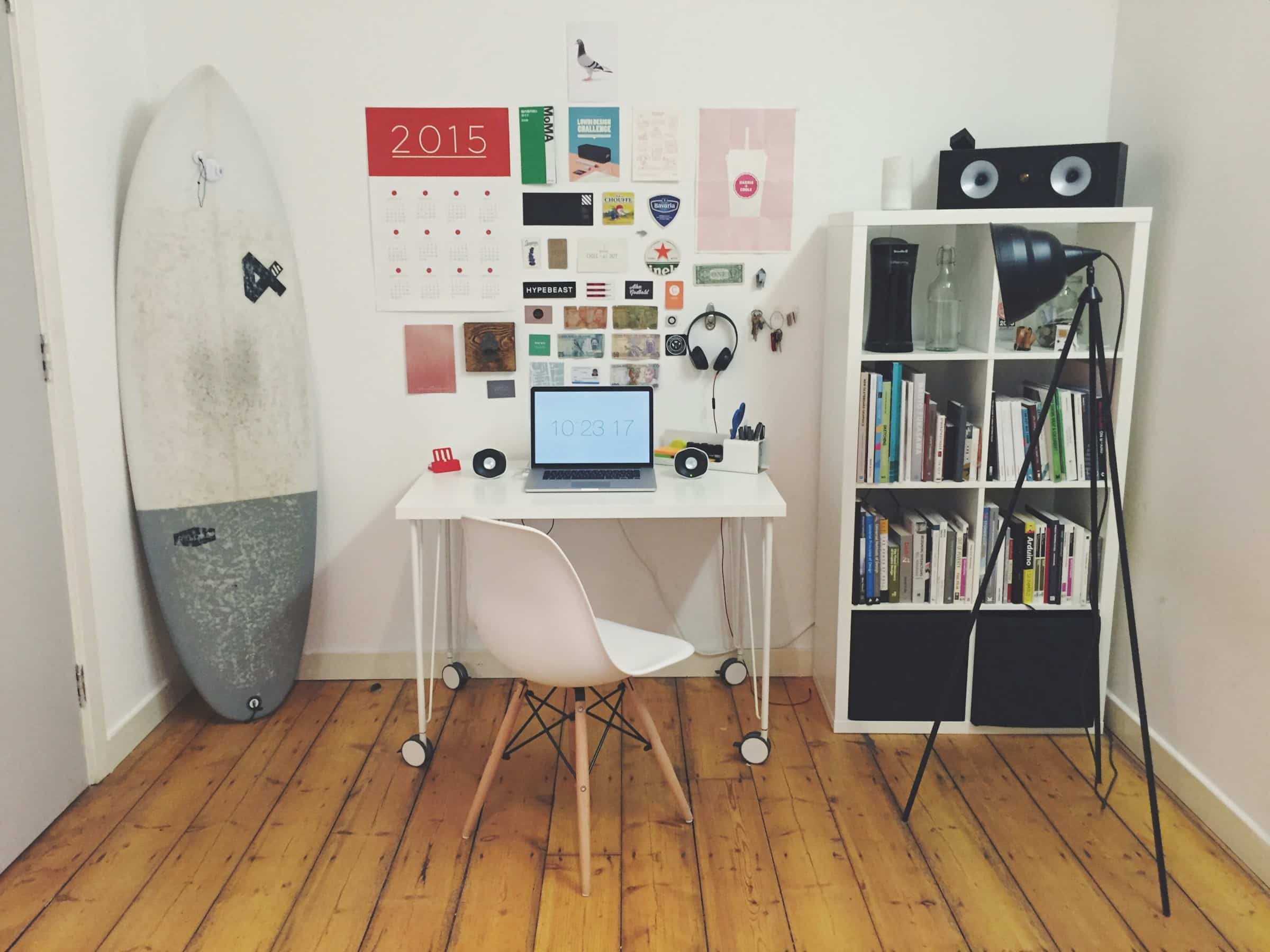How to Design a Noise-Reducing Study Nook in a Busy Family Home?

In today’s world, where work-from-home routines are becoming increasingly common, finding a quiet, distraction-free corner in your home can seem like a daunting task. Your home, an arena of endless activity and noise, could be the last place where you imagine creating a serene, soundproof work or study space. However, you can turn this around by designing a noise-reducing nook in your busy family home.
With a little soundproofing knowledge, some DIY inspiration from wikihow, and the right acoustic materials, you can transform any corner of your home into a calm, productive space. This article will guide you step-by-step on how to create a soundproof study nook in your home, perfect for your work, study, or even a quiet place to relax.
En parallèle : What Are the Best Techniques for Incorporating Indoor Vertical Gardens in Small Spaces?
1. Find The Right Space
Before you start soundproofing, the first step is to identify the right space in your home to set up your study nook.
It could be a spare bedroom, a little-used dining area, or even a quiet corner in your living room. While choosing the space, consider the amount of natural light it receives, its proximity to noise sources like the kitchen or children’s play area, and the availability of empty walls for soundproofing. Remember, the goal is to make your space as sound-resistant as possible, so choose wisely.
Cela peut vous intéresser : What’s the Best Way to Implement a Kid-Friendly Smart Home System?
Once you’ve identified your space, measure the walls, ceiling, and floor area to determine how much soundproofing material you will need. This step is crucial to get an accurate estimation of the resources required.
2. Start With The Walls
The walls of your room play a significant role in soundproofing. They are the first line of defense against noise entering your study nook.
There are several ways to soundproof your walls. One cost-effective method is to hang acoustic panels. They are designed to absorb sound waves, reducing echo and background noise. You can also consider installing soundproof drywall, which is a type of wallboard specifically designed to dampen noise.
If these options are not feasible, consider using soundproof paint. Although not as effective as acoustic panels or soundproof drywall, it can help reduce noise levels to some extent. Remember, every little bit helps when it comes to soundproofing.
Another important thing to keep in mind is to seal any gaps or cracks in your walls. These can act as channels for sound to enter your room, so sealing them up is an essential step in your soundproofing journey.
3. Consider Soundproofing The Floor And Ceiling
Sound doesn’t just travel through walls; it can also come from above or below. Therefore, soundproofing your floor and ceiling can be equally important, especially if your chosen space is not on the ground floor.
For your floors, consider using soundproofing mats or rugs. These are made from dense materials that help absorb sound and reduce noise transmission. For the ceiling, you can consider acoustic tiles or panels similar to those used for the walls.
Additionally, if you’re planning on keeping heavy furniture like bookshelves or desks in your study nook, consider adding some padding underneath to minimize noise caused by movement.
4. Add Sound Absorbing Furniture
Furniture can play a significant role in reducing noise in your study nook. The right kind of furniture can absorb sound, making your space even more quiet.
Adding a bookshelf filled with books on one wall can help absorb sound. Heavy drapes or curtains can also be used to dampen noise. Large, upholstered furniture like sofas or armchairs can also absorb sound effectively.
Remember, the goal is to reduce as much noise as possible, so think creatively while positioning your furniture.
5. Don’t Forget The Doors And Windows
Finally, don’t forget about your doors and windows. These are common places where sound can leak in and out of a room.
For doors, consider installing solid-core doors as they are more effective at blocking sound than hollow-core doors. Adding a door sweep can also help block sound from entering underneath the door.
For windows, consider installing double-paned windows as they offer better sound insulation than single-paned windows. If replacing your windows is not an option, consider using thick curtains or window inserts for additional soundproofing.
Creating a noise-reducing study nook in a busy family home may seem like a daunting task, but with a little planning and effort, it can be done. Remember, the goal is not to make your space completely soundproof, but to reduce noise to a level where you can work or study without interruptions. With these tips and tricks, you’re well on your way to achieving that.
6. Effective Use of Soundproofing Accessories
An additional step to augment your soundproofing initiatives involves the smart use of soundproofing accessories. There are numerous products available in the market that can further enhance your study space’s tranquility.
Soundproofing curtains can make a significant difference. Although they might be a tad heavier than conventional curtains, they are woven tightly with multiple layers of material that absorb and reflect sound. When selecting these curtains, opt for ones that reach from the ceiling to the floor for maximum effectiveness.
Similarly, consider using a soundproofing carpet or rug. This accessory, often overlooked, can be beneficial, especially if your study nook has a hard flooring surface. A large, thick area rug can absorb sounds, preventing them from bouncing off the hard floor. For additional sound absorption, place a soundproof underlay beneath the carpet.
Soundproofing weather strips can also seal gaps around doors and windows effectively. They are easy to apply and can significantly reduce the amount of noise leaking into your study nook.
Lastly, consider a soundproof room divider if your study nook is in an open space. These dividers come in many styles and materials, and they can both isolate your space and absorb sound.
Combine these accessories with the methods mentioned in the prior sections can help you design an effective, noise-reducing study nook.
7. Conclusion: The Importance of a Noise-Reducing Study Nook
In conclusion, creating a noise-reducing study nook in a busy family home is not just about comfort; it’s about productivity. Whether you’re working from home, studying for exams, or simply seeking a quiet place to think and relax, a soundproof nook can make a significant difference.
Remember, it’s not about complete silence; it’s about reducing noise to a manageable level. Every step version or modification you implement, from sealing cracks to adding sound-absorbing furniture, contributes to the overall tranquility of your space.
These content images posted on the wikihow website can serve as your DIY guide. You don’t need express written consent from an interior designer to make these alterations. With a little effort and ingenuity, and by using the right version jpg of products, you can transform a corner of your busy family home into a peaceful study space.
The steps we’ve outlined above may seem extensive, but the benefits you’ll reap in productivity and peace of mind will be well worth the effort. So, start planning, gather your wikihow ppbr resources, and get to work creating your noise-reducing study nook. It’s time to say goodbye to distractions and embrace focused, efficient work or study sessions at home.
